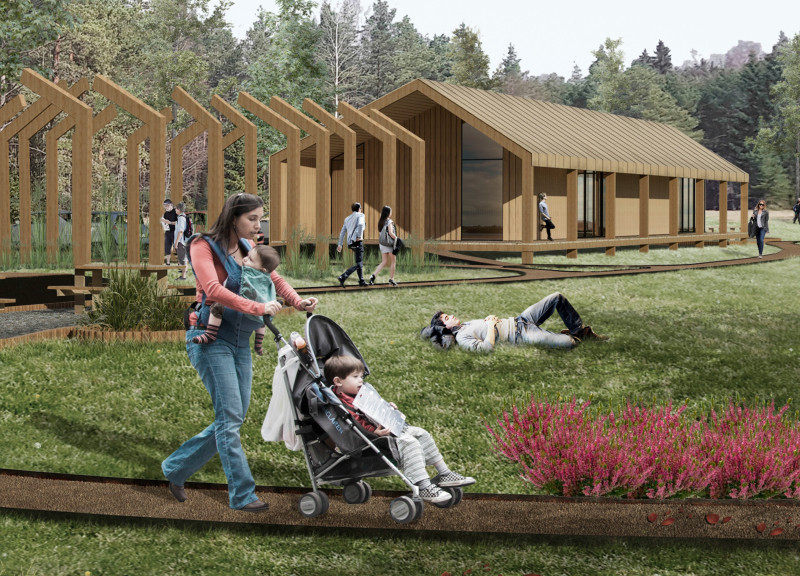5 key facts about this project
The Kemeri Bog Visitor Center is an architectural project located within the Kemeri National Park in Latvia. This facility serves as a gateway for visitors to explore and engage with the unique landscape of the bog ecosystem. Designed to integrate seamlessly with its natural surroundings, the visitor center emphasizes sustainability and ecological awareness while providing essential amenities for public enjoyment and education.
The project functions as an information hub, offering resources such as maps, educational displays, and guided tour services. The building layout is strategically planned, encouraging visitors to immerse themselves in the environment while navigating through various zones dedicated to exploration, relaxation, and education. By placing equal importance on the visitor experience and environmental stewardship, the design demonstrates a commitment to promoting sustainable tourism.
Creating a strong relationship between architecture and site, the visitor center incorporates an organic design language that reflects the unique topography of the region. The use of natural materials, primarily wood, not only aligns the structure with traditional Latvian building practices but also enhances its environmental performance. Large glass façades provide unobstructed views of the surrounding landscape, facilitating natural light while minimizing the building's ecological footprint.
A significant aspect that sets this project apart from conventional visitor centers is its elevation above the natural terrain. This design choice fosters a sense of floating amidst the landscape, creating an immersive experience that highlights the dynamic interaction between the structure and the bog environment. Moreover, the integration of pedestrian pathways throughout the site enhances accessibility, while promoting a harmonious coexistence between human activity and ecological preservation.
In addition to its primary functions, the Kemeri Bog Visitor Center aims to educate visitors on the importance of the bog ecosystem through carefully curated educational features. Displays highlight the region's flora and fauna, while the surrounding landscape is designed to support native species, thereby reinforcing the project’s commitment to biodiversity. By focusing on ecological principles and innovative design approaches, this project not only serves a functional role but also promotes an understanding and appreciation of the natural world.
For further exploration of the Kemeri Bog Visitor Center, readers are encouraged to review the architectural plans, sections, designs, and ideas that provide deeper insights into the unique elements of this project. Engaging with these materials will enhance understanding of the thoughtful integration of architecture with the natural environment.


























